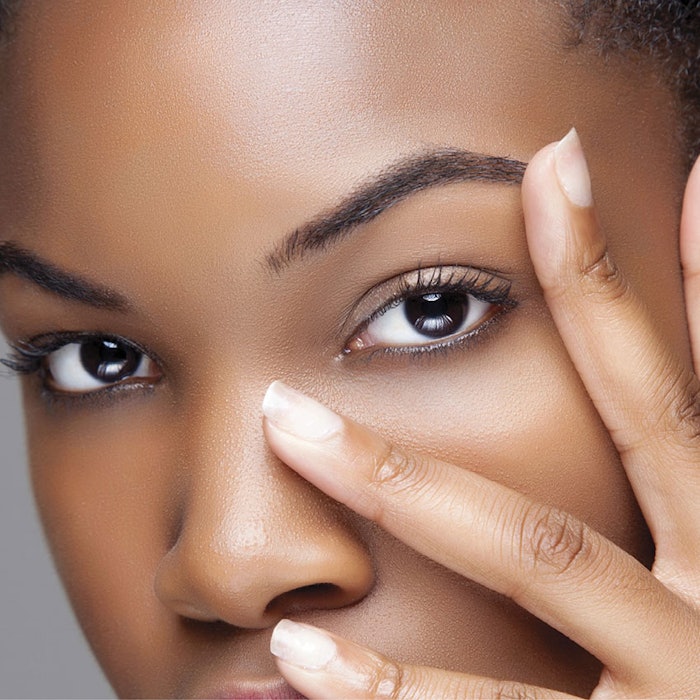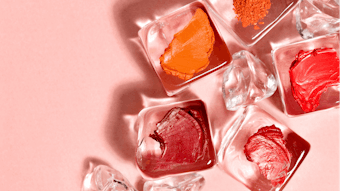
People of color comprise the majority of the world’s population—so beauty care must address a broad spectrum of cultures and skin types. The rise of multicultural beauty is palpable. As brands compete for the attention of a diverse consumer base in the West and developing markets, could research into differences in ethnic skin types underpin new product development?
What Lies Beneath
Research on the biological differences in ethnic skin is limited. Much has been written about Asian skin and skin care, as well as skin-nourishing ingredients indigenous to Africa, e.g., plant butters and oils. But it has been more than a decade since Rawlings compelled us to recognize the differences in skin structure and function between ethnicities, and to formulate skin care accordingly.
The most obvious difference, skin color, is dictated by melanin content, which influences photo-protection. Darkly pigmented skin is also known to retain younger properties compared with Caucasian skin, which is prone to the earlier and greater formation of wrinkles and sagging. Additionally, black skin tends to exhibit increased pore size, sebum secretion and skin surface microflora.1
However, it should be of interest to expand this research, for example, by looking at the contribution of comparative clinical studies of both Caucasian and black individuals living in the same location. Such studies are rare yet informative; for example, revealing the adaptation of ethnic skin types to an environment radically different from their origin.
Other work has shown differences in skin metabolism and the clinical impact on ethnic skin types, even among subjects located in the same region.
Research also suggests hydration, represented by pyrrolidone carboxylic acid (PCA) as a marker for natural moisturizing factor, is present at higher levels in black skin than Caucasian skin. In contrast, filaggrin-processing enzyme activities, which serve as epidermal photo-damage markers, differ in Caucasian skin in and of itself per skin site.2
It seems the more that biology reveals about differences between ethnic skin types, the more questions it raises over seemingly contradictory conclusions; all the more reason to investigate further.
Take black skin, for example. While it is evolutionarily well-protected against UV through its melanin content and higher hydration levels, pigmentation appears to have no effect on the properties of the skin barrier. In fact, in a study of albino African, black African and Caucasian skin, the albino skin was superior in terms of stratum corneum integrity and barrier recovery.3
People of color comprise the majority of the world’s population—so beauty care must address a broad spectrum of cultures
and skin types.
This reduced barrier capacity can be visualized in continuous color maps generated by interpolating between measured values, e.g., transepidermal water loss (TEWL) and skin capacitance, and superimposing the values on digital facial images. Such maps capture the complexity of facial anatomy and skin biophysical properties. Indeed, remarkable gradients that are distinctive in different ethnic groups exist at different facial sites and within short regional distances.4
In another study of hydrolipidic cutaneous film pH, frictional properties and wettability, a significant difference in black and Caucasian skin in women living in France was observed. These ethnic skin types had a different hydrophilic/lipophilic balance; however, the study also reported no difference in skin TEWL, hydration or dryness between the groups.
Opportunity in Diversity
How do differences translate into formulations? One self-assessment questionnaire regarding cosmetic practices found that all black women surveyed reported using a hydrating product daily, compared with only 16% of Caucasians. They explained this practice mitigated the “dry skin” sensation they felt when not using a moisturizer.5
Differences in sweat secretion or sebum profiles might also be at play. In fact, when examined clinically, black skin appears to be oily and acne-prone; another study profiling forehead sebum lipids showed African American skin had more total lipids than Caucasians. Wax esters, in particular, differed in quantity.6
Finally, although the prevalence of skin sensitivity is similar across ethnicities, stimuli vary due to inherent biological differences in skin type. In particular, reduced barrier function is often associated with skin sensitivity.
Being mindful of biological challenges presents opportunities to formulate products for black and other skin types. Cleansers, peels, masks and products for acne-prone, black skin, for example, require a balance between efficacy and mildness to preserve the barrier.
References
All websites accessed July 25, 2017.











